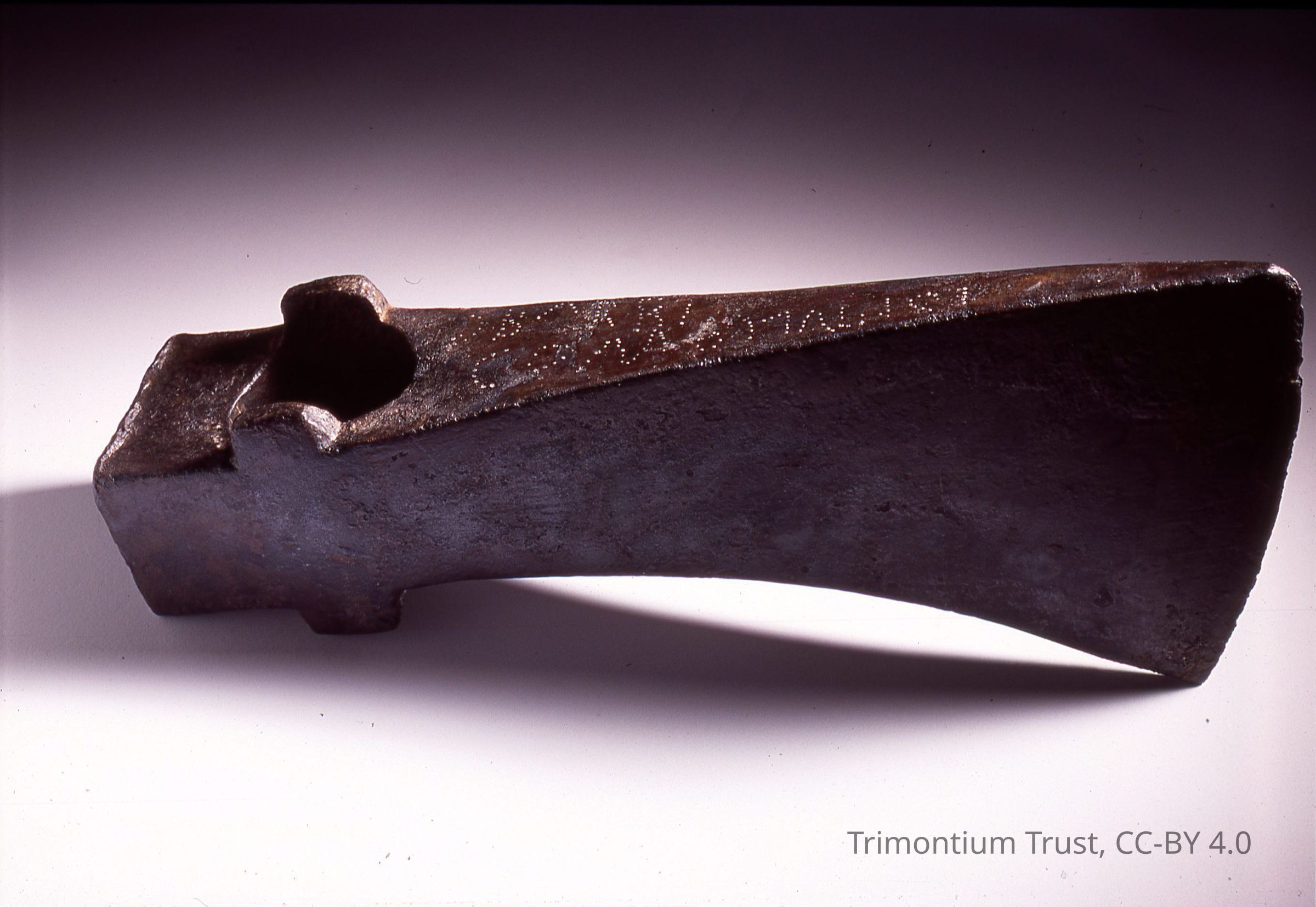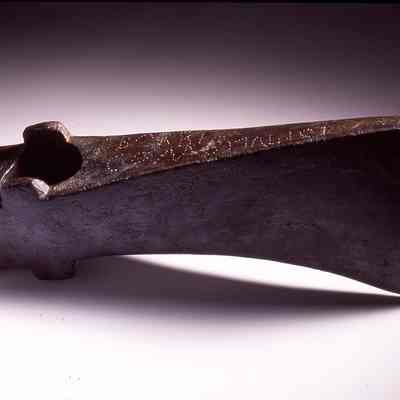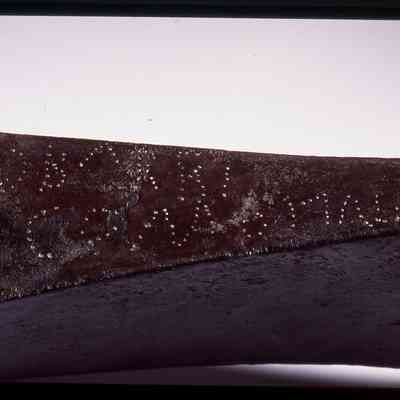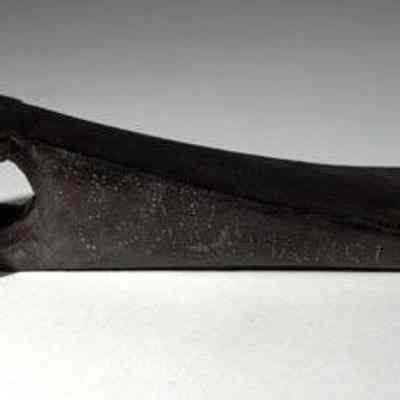Axehead, felling
Name/Title
Axehead, fellingEntry/Object ID
X.FRA 236Description
Heavy axehead of iron, for felling or shaping. The axehead was made by forging a solid piece of iron, the eye having been punched out. On the lower side of the square end is impressed a stamp with the letters L.G.R. On the upper edge it bears a punched-dot inscription in two lines, the first consists of a centurial mark followed by 'BARRI'. The second line reads 'COMPITALICI'. 'BARRI COMPITALICI' can be translated as 'Property of Compitalicus in the century of Barrus'.Use
Felling axes were used to chop down trees. Roman soldiers were builders as well as fighters. On the march, they built temporary ramparts and ditches around their camps. Once an area had been conquered, the army built forts and permanent barracks of wood or stone.Context
Found at TrimontiumCollection
National Museums ScotlandCategory
Axe
Tools
Acquisition
Accession
X.FRA 236Source (if not Accessioned)
National Museums of ScotlandMade/Created
Date made
80 - 100Time Period
1st - 2nd centuryEthnography
Cultural Region
Continent
EuropeCulture/Tribe
Romano British, Roman




